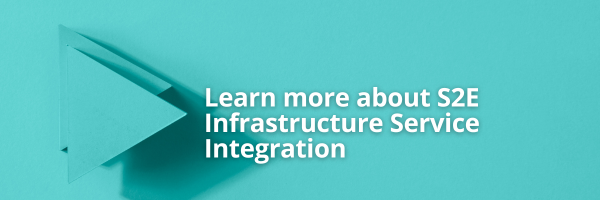MTD and Mobile Device Management for Business Security

By Marco Risati, Pre-Sales Manager, Infrastructure Service Integration Business Unit, S2E
The global mobile device security market was valued at $20.60 billion in 2022 and is projected to reach $45.70 billion by 2030, with a compound annual growth rate (CAGR) of 10.60% from 2024 to 2030.
This market includes solutions and technologies designed to protect smartphones, tablets, and other mobile devices from security threats such as malware, unauthorized access, and data breaches. The increasing proliferation of mobile applications and the widespread adoption of mobile devices in the workplace have significantly contributed to its growth. Organizations are investing in mobile device management solutions (MDM) to maintain control over their devices and ensure compliance with corporate security policies.
This trend underscores the urgent need for companies to protect sensitive information stored on mobile devices. A fundamental aspect of mobile security is endpoint protection, as these devices often serve as potential entry points for cyber threats. This category includes not only mobile phones but also laptops and tablets that connect to corporate networks. The rise of remote work has heightened the demand for effective endpoint security solutions, as more employees rely on personal devices for work-related activities. Recent studies indicate that 70% of employees use personal devices for professional tasks, increasing the risk of data breaches and security incidents. As organizations continue to embrace mobility, investing in mobile security solutions is becoming a strategic priority.
Source: https://www.verifiedmarketreports.com/product/mobile-device-security-market/
Mobile Security and MDM (Mobile Device Management)
Mobile security remains a key concern for organizations that need to safeguard corporate mobile devices and data while respecting user privacy. The first essential step in securing these devices is the adoption of an MDM (Mobile Device Management) solution. This technology enables companies to define and configure policies governing device usage, applying restrictions to ensure compliance with corporate governance and security regulations. This initial level of management enhances device security through hardening techniques, ensuring that devices operate safely within the corporate infrastructure.
The Evolution Towards EMM and UEM
Over time, MDM has evolved into EMM (Enterprise Mobility Management), which extends beyond device management to include mobile application and content management. EMM solutions allow organizations to control which applications can be installed and used, managing access to sensitive corporate content based on device posture and user identity. The introduction of UEM (Unified Endpoint Management) further expands security management beyond mobile devices to include laptops, Macs, VR headsets, and other endpoints. This unified management framework enhances operational control with additional capabilities, such as automated device discovery and patch deployment across all IT assets.
Enterprise Mobility Services and Mobile Device Management by S2E
S2E specializes in implementing MDM mobile solutions, along with EMM and UEM systems, offering a comprehensive range of services tailored to enterprise mobility needs. These services include Mobility Assessment, designed to help clients evaluate their maturity in mobile device management, and Mobile Advisory, which assists companies in assessing and selecting new solutions, providing training, conducting system health checks, and supporting the adoption of BYOD (Bring Your Own Device) programs.
S2E also manages the installation, configuration, and distribution of mobile devices, as well as support services for troubleshooting and issue resolution. These services are available either as a fully managed solution or as second-level support for companies that handle first-level support internally. Leveraging advanced functionalities such as Zero-Touch Enrollment, S2E ensures that devices are configured automatically without requiring manual intervention. As a certified Google Android Enterprise MSP (Managed Service Provider) Silver Partner, S2E provides scalable and secure mobile device management solutions.
Mobile Threat Defense Integration with Mobile Device Management
Despite the capabilities of MDM solutions, additional security threats remain undetectable, including malware, phishing and smishing attacks, network intrusions, and advanced vulnerabilities. The integration of MTD (Mobile Threat Defense) is essential to provide enhanced protection. MTD solutions leverage artificial intelligence algorithms to detect and block real-time security breaches, identifying anomalies in device activity, network-based attacks, and phishing attempts. When integrated with mobile device management systems, these tools create a multi-layered security approach that significantly strengthens mobile security defenses.
Mobile Security, NIS2 Directive and DMA Regulation
The European NIS2 Directive mandates that organizations classified as “essential” (such as those operating in energy, transportation, healthcare, banking, and financial markets) and “important” (such as postal and courier services, waste management, medical device manufacturing, and large-scale retail) implement appropriate security measures to protect their IT assets, including mobile devices. A poorly secured mobile device can act as a Trojan horse, allowing attackers to infiltrate corporate IT infrastructures. The directive requires affected organizations to mitigate risks, proactively detect and respond to mobile threats, and ensure a secure and resilient mobile ecosystem. Companies must also assess cybersecurity risks across their supply chains and conduct periodic security audits of their vendors.
The Digital Markets Act (DMA), the new European regulation on digital markets, aims to prevent market dominance abuses before they occur. This regulation also has implications for mobile security, particularly in terms of application distribution. The DMA allows applications to be installed from third-party sources outside the official app store of the device's operating system (a practice known as sideloading), increasing the risk of unverified app distribution. In this context, the adoption of a mobile device management solution can restrict app installations to corporate-approved stores, while an MTD solution can protect devices from potential app vulnerabilities.
S2E’s Integrated Security Approach
To address these challenges, S2E offers a comprehensive suite of security solutions, leveraging expertise and strategic partnerships with leading technology vendors. The integration of mobile management solution frameworks such as MDM and MTD enables centralized and secure endpoint management.
S2E’s Security Operation Center (SOC) is tailored to meet client requirements, providing real-time monitoring and threat management. The SOC includes multiple levels of security alert analysis, engaging both security analysts for initial threat assessment and digital forensics experts for in-depth investigations.
Additionally, S2E’s Managed Security Service Provider (MSSP) offering ensures continuous security policy enforcement, application deployment management, and proactive mobile device protection. This approach delivers robust and reliable security solutions for enterprise clients.
A Multi-Layered Approach to Mobile Security
Mobile security is a critical priority for modern enterprises striving to protect corporate data and systems from increasingly sophisticated cyber threats. The combined implementation of mobile device management and MTD solutions ensures a comprehensive, multi-layered approach to mobile security, significantly reducing the risks of data breaches and unauthorized access. By integrating MDM, EMM, UEM, and MTD technologies, organizations can enhance their security posture and safeguard their mobile ecosystems against evolving threats.





.png?height=200&name=Debito%20tecnologico%20(1).png)
Blog comments